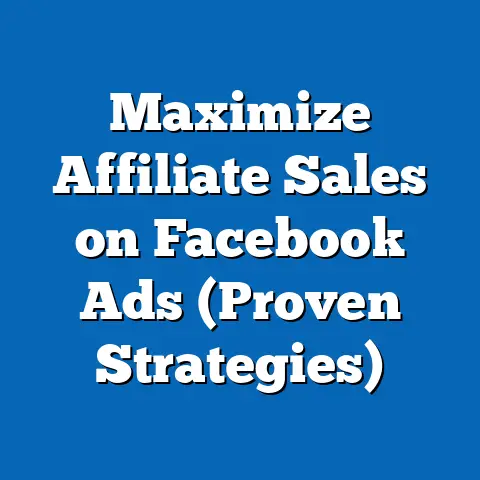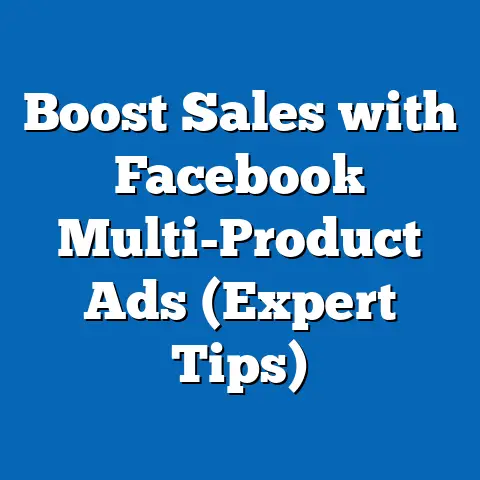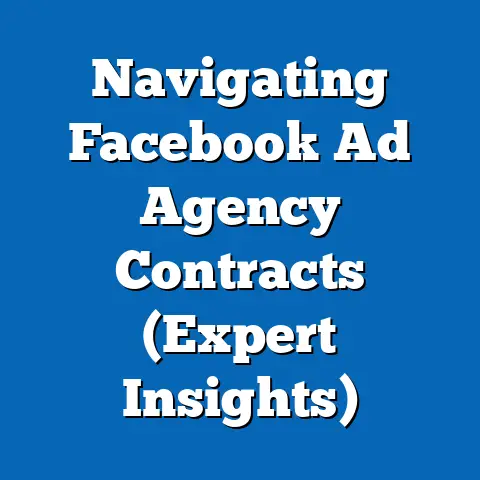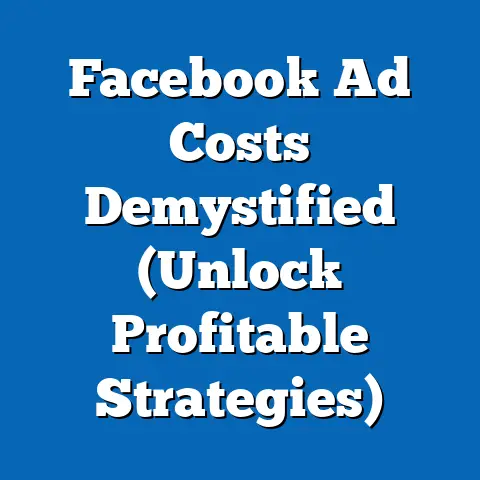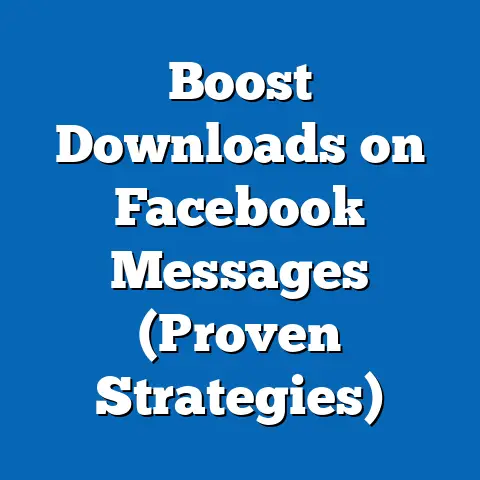Ad Sets vs. Campaigns: Mastering Facebook Ads (Strategic Insights)
Understanding the Basics: Campaigns and Ad Sets Defined
Let’s start with the fundamentals. In the Facebook Ads Manager, a campaign is the highest-level structure. Think of it as the overarching container that holds all your advertising efforts for a specific objective. Its primary purpose is to define what you want to achieve with your ads – whether that’s increasing brand awareness, generating leads, driving traffic to your website, or boosting sales. I always tell my clients, “Your campaign is the ‘why’ behind your advertising.”
Now, let’s zoom in on ad sets. Ad sets reside within campaigns and serve as the tactical engine that drives your campaign’s success. The ad set level is where you define who you want to target, how much you’re willing to spend, where you want your ads to appear (placements), and when you want them to run (schedule). Basically, ad sets control the nitty-gritty details of your advertising efforts. I think of ad sets as the “how” and “where” of your Facebook advertising. They’re where you meticulously craft your strategy to reach the right people at the right time, with the right message.
To visualize this, imagine a family tree. The campaign is the grandparent – the head of the family with a broad vision. Ad sets are the parents – they carry out the grandparent’s vision with specific plans and actions. And finally, the ads themselves are the children – the actual message and creative that the world sees.
Here’s the hierarchy in a nutshell:
- Campaign: Sets the objective (e.g., “Increase Website Conversions”)
- Ad Set: Defines the audience, budget, schedule, and placements (e.g., “Target Women Aged 25-34 Interested in Yoga, $20 Daily Budget, Run on Facebook and Instagram Feeds”)
- Ads: The actual creative content – images, videos, text – that users see.
The Role of Campaign Objectives: Guiding Your Strategy
Choosing the right campaign objective is absolutely crucial. It’s the foundation upon which your entire advertising strategy is built. Facebook categorizes objectives into three main types:
- Awareness: These objectives are designed to reach people who are more likely to pay attention to your ads and increase awareness of your brand. Examples include:
- Brand Awareness: Show your ads to people who are most likely to recall them.
- Reach: Show your ads to the maximum number of people within your target audience.
- Consideration: These objectives are aimed at getting people to think about your business and seek more information. Examples include:
- Traffic: Drive traffic to your website, app, or Facebook page.
- Engagement: Get more page likes, event responses, or post engagement.
- App Installs: Encourage people to download your app.
- Video Views: Get more people to watch your video content.
- Lead Generation: Collect leads directly within Facebook or Instagram.
- Conversion: These objectives are focused on driving specific actions on your website, app, or in your physical store. Examples include:
- Conversions: Encourage people to take valuable actions on your website, like making a purchase or filling out a form.
- Catalog Sales: Show products from your catalog to people who are most likely to buy them.
- Store Traffic: Drive more foot traffic to your physical store locations.
- Brand Awareness: Show your ads to people who are most likely to recall them.
- Reach: Show your ads to the maximum number of people within your target audience.
- Traffic: Drive traffic to your website, app, or Facebook page.
- Engagement: Get more page likes, event responses, or post engagement.
- App Installs: Encourage people to download your app.
- Video Views: Get more people to watch your video content.
- Lead Generation: Collect leads directly within Facebook or Instagram.
- Conversions: Encourage people to take valuable actions on your website, like making a purchase or filling out a form.
- Catalog Sales: Show products from your catalog to people who are most likely to buy them.
- Store Traffic: Drive more foot traffic to your physical store locations.
I’ve seen campaigns fail miserably simply because the wrong objective was selected. For instance, if you’re trying to generate leads but choose the “Traffic” objective, you’re essentially telling Facebook to optimize for clicks, not lead form submissions. The algorithm will prioritize showing your ads to people who are likely to click, even if they’re not likely to become leads. I learned this the hard way when I first started out, and I ended up spending a lot of money driving irrelevant traffic to a client’s website.
Each objective influences how Facebook optimizes your ad delivery. If you select “Conversions,” Facebook will prioritize showing your ads to people who have a history of making purchases or taking similar actions. If you select “Engagement,” Facebook will prioritize showing your ads to people who are likely to like, comment, or share.
Takeaway: Always align your campaign objective with your specific business goals. Ask yourself, “What do I really want to achieve with this campaign?” Then, choose the objective that best reflects that goal.
Ad Sets – The Tactical Level: Mastering the Details
Now, let’s dive into the tactical level of ad sets. This is where you get your hands dirty and fine-tune your targeting, budget, placements, and schedule. Mastering these elements is essential for maximizing the effectiveness of your campaigns.
Audience Targeting: Reaching the Right People
One of the most powerful features of Facebook Ads is its robust audience targeting capabilities. You can target people based on a wide range of factors, including:
- Demographics: Age, gender, location, education, job title, etc.
- Interests: Hobbies, activities, pages they’ve liked, etc.
- Behaviors: Purchase history, device usage, travel habits, etc.
- Custom Audiences: Uploaded customer lists, website visitors, app users, etc.
- Lookalike Audiences: People who are similar to your existing customers.
I’ve found that combining different targeting options can be incredibly effective. For example, you could target women aged 25-34 who are interested in yoga and have recently purchased athletic wear online. This level of granularity allows you to reach highly specific segments of your audience, increasing the relevance of your ads and improving your conversion rates.
Pro Tip: Don’t be afraid to experiment with different audience combinations. A/B testing different audiences within your ad sets is a great way to identify which segments are most responsive to your ads.
Budget and Bidding: Spending Wisely
Your budget determines how much you’re willing to spend on your ads, while your bidding strategy determines how you compete with other advertisers for ad placements. Facebook offers several bidding options, including:
- Highest Volume: Facebook automatically bids to get you the most results for your budget.
- Cost per Result Goal: You set a target cost per result, and Facebook tries to achieve that goal.
- Value Optimization: Facebook bids to get you the highest purchase value for your budget.
- Manual Bidding: You set your own bids for each ad set.
I generally recommend starting with the “Highest Volume” bidding strategy, especially if you’re new to Facebook Ads. This allows Facebook to optimize your bids based on real-time data. As you gain more experience, you can experiment with other bidding strategies to see what works best for your campaigns.
Pro Tip: Monitor your budget and bidding performance closely. If you’re not getting the results you want, try adjusting your budget or bidding strategy.
Ad Placements: Where Your Ads Appear
Facebook offers a variety of ad placements, including:
- Facebook Feed: The main news feed on Facebook.
- Instagram Feed: The main news feed on Instagram.
- Facebook Marketplace: A marketplace where people can buy and sell items.
- Facebook Stories: Short-form video and image content that disappears after 24 hours.
- Instagram Stories: Short-form video and image content that disappears after 24 hours.
- Audience Network: A network of third-party apps and websites where your ads can appear.
I’ve found that the best ad placements depend on your target audience and campaign objective. For example, if you’re targeting a younger audience, Instagram Stories might be a good option. If you’re trying to drive website conversions, Facebook Feed and Instagram Feed are generally the most effective placements.
Pro Tip: Test different ad placements to see which ones perform best for your campaigns. You can use Facebook’s A/B testing tool to compare the performance of different placements.
Scheduling: When Your Ads Run
Your ad schedule determines when your ads run. You can choose to run your ads continuously or set a specific start and end date. You can also schedule your ads to run only during certain hours of the day or days of the week.
I’ve found that scheduling your ads can be particularly effective if you know when your target audience is most active online. For example, if you’re targeting working professionals, you might want to schedule your ads to run during their lunch breaks or after work hours.
Pro Tip: Use Facebook’s audience insights tool to learn more about your target audience’s online behavior. This can help you determine the best times to schedule your ads.
A/B Testing: Optimizing for Success
A/B testing is a powerful technique for optimizing your ad sets. It involves creating multiple versions of your ad sets with slight variations and then comparing their performance to see which version performs best.
You can A/B test a variety of elements within your ad sets, including:
- Audience Targeting: Different audience combinations.
- Ad Creative: Different images, videos, and text.
- Ad Placements: Different ad placements.
- Bidding Strategies: Different bidding strategies.
I recommend A/B testing one element at a time so you can isolate the impact of each change. For example, if you’re testing different ad creatives, keep the audience targeting, ad placements, and bidding strategy the same across all versions of your ad set.
Pro Tip: Use Facebook’s A/B testing tool to set up and track your A/B tests. This tool makes it easy to compare the performance of different versions of your ad sets.
Campaign vs. Ad Set Strategies: A Balancing Act
Now that we’ve covered the basics of campaigns and ad sets, let’s talk about how to develop effective strategies at both levels.
Campaign-Level Strategies
At the campaign level, your primary focus should be on aligning your advertising efforts with your overall business goals. This involves:
- Defining Clear Objectives: What do you want to achieve with your advertising?
- Setting a Realistic Budget: How much are you willing to spend to achieve your objectives?
- Choosing the Right Campaign Objective: Which objective best reflects your goals?
- Monitoring Overall Performance: Are your campaigns delivering the results you want?
If you’re not seeing the results you want at the campaign level, you might need to adjust your objectives, budget, or campaign objective. For example, if you’re not generating enough leads, you might need to increase your budget or switch to a different campaign objective, such as “Lead Generation.”
Ad Set-Level Strategies
At the ad set level, your primary focus should be on optimizing your targeting, budget, placements, and schedule to reach the right people with the right message at the right time. This involves:
- Conducting Thorough Audience Research: Who are you trying to reach?
- Creating Compelling Ad Creative: What will capture their attention?
- Testing Different Ad Placements: Where are they most likely to see your ads?
- Optimizing Your Bidding Strategy: How can you get the most results for your budget?
- Monitoring Individual Ad Set Performance: Which ad sets are performing best?
If you’re not seeing the results you want at the ad set level, you might need to adjust your targeting, ad creative, ad placements, bidding strategy, or schedule. For example, if an ad set is underperforming, you might need to try a different audience combination or create new ad creative.
Key Point: Campaign-level strategies provide the overall direction, while ad set-level strategies provide the tactical execution. Both are essential for success.
Real-World Applications and Case Studies: Learning from Success
To illustrate the effective use of campaigns and ad sets, let’s look at a few real-world examples:
Case Study 1: E-commerce Store
An e-commerce store selling handmade jewelry wanted to increase online sales. They created a “Conversions” campaign with multiple ad sets, each targeting a different customer segment based on interests and demographics. They A/B tested different ad creatives and ad placements within each ad set.
Results: By optimizing their ad sets based on performance data, they were able to significantly increase their online sales and improve their ROI.
Case Study 2: Local Restaurant
A local restaurant wanted to drive more foot traffic to their establishment. They created a “Store Traffic” campaign with ad sets targeting people within a certain radius of their restaurant. They scheduled their ads to run during lunch and dinner hours and used ad creative featuring mouth-watering photos of their dishes.
Results: By targeting local customers and scheduling their ads during peak hours, they were able to significantly increase foot traffic to their restaurant.
Case Study 3: Software Company
A software company wanted to generate leads for their enterprise software solution. They created a “Lead Generation” campaign with ad sets targeting professionals in specific industries and job titles. They used lead forms to collect contact information and offered a free demo in exchange for signing up.
Results: By targeting the right audience and offering a valuable incentive, they were able to generate a steady stream of qualified leads for their sales team.
Key Takeaway: These case studies demonstrate that the effective use of campaigns and ad sets can lead to significant improvements in advertising performance across a variety of industries and business sizes.
Conclusion: Mastering the Art of Facebook Advertising
In conclusion, understanding the differences between campaigns and ad sets is essential for mastering the art of Facebook advertising. Campaigns provide the overall strategic direction, while ad sets provide the tactical execution. By carefully aligning your campaign objectives with your business goals and optimizing your ad sets based on performance data, you can significantly improve your advertising results and achieve your desired outcomes.
I encourage you to take a strategic approach to your Facebook advertising efforts. Reflect on your current campaigns and consider adjustments based on the insights shared in this article. Experiment with different targeting options, ad creatives, and bidding strategies. And most importantly, monitor your performance closely and be willing to adapt your strategy as needed.
Remember, Facebook advertising is an ongoing process of learning, testing, and optimization. By embracing this mindset, you can unlock the full potential of the platform and achieve remarkable results. Now go out there and craft some killer campaigns!

